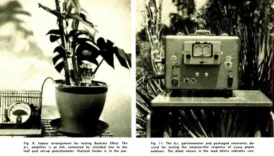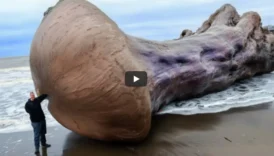THE OTTOMAN GRAND VIZIER CHOPPED INTO PIECES AND SOLD

The lives of those in high office in the Ottoman Empire were always in danger. Tezkireci Ahmet Pasha was executed as a result of intrigues and rebellions after his rapid rise and the success he achieved through bribery. After his death, his corpse was dismembered and sold, and this event became a concrete example of the expression “walking around with his head on his shoulders”.
- THE OTTOMAN GRAND VIZIER CHOPPED INTO PIECES AND SOLD
- TEZKIRECI AHMET PASHA’S EARLY LIFE AND RISE
- Family Background and Initial Duties
- First Positions and Allegations of Bribery
- THE PATH TO THE GRAND VIZIERATE: “DELI” IBRAHIM AND A WEB OF BRIBES
- Gaining Influence with Sultan Ibrahim I
- Early Tenure and the War with Venice
- PALACE INTRIGUES AND THE “SAMUR FUR” TALE
- Sultan Ibrahim I’s Unusual Demands
- The Imperial Caique and Extravagant Spending
- STANDOFF WITH THE JANISSARIES
- Toward Rebellion
- The Military Revolt Uprising and the Demand for the Vizier’s Head
- THE GHASTLY END OF “THOUSAND PIECES” AHMET PASHA
- Execution and Aftermath
- The Emergence of “Thousand Pieces"
- THE DANGEROUS POSITION OF GRAND VIZIERS IN THE OTTOMAN EMPIRE
- The Delicate Balance of Rise and Fall
- The Effects of Intrigue and Bribery
- A SOBERING TALE
- REFERENCES AND FURTHER READING
From the early periods of the Ottoman Empire’s rise on the stage of history, high-ranking officials in state service always lived under a great deal of risk. The Turkish phrase “kelle koltukta gezmek,” loosely translated to “living every moment with your head in your hands,” encapsulates this precarious situation. A single misstep or losing the sultan’s trust could easily lead to execution for a pasha, grand vizier, or other prominent official. Over the long span of Ottoman history, there were even macabre customs associated with the moment of execution, such as placing a severed head under the victim’s arm. This tradition is often cited as the direct source for the saying “kelle koltukta gezmek” [Source: History Research Notes, Vol. III].
Because of the complex structure of palace culture and state governance in the Ottoman Empire, various court intrigues, coup attempts, and power struggles ended in tragic outcomes. Grand viziers, viziers, and even princes frequently found themselves having to literally “live with their head in their hands.” Some were executed, while others were subjected to punishments so horrific that they defy belief. Among the most chilling examples of these tragic finales stands the tale of an Ottoman grand vizier known by the epithet “Binbir Parça Ahmet Pasha,” or “Ahmet Pasha in a Thousand Pieces.” Although he rose swiftly and consolidated his wealth and power in the empire, he ultimately paid for his actions during an uprising: not only was he decapitated, but his body was dismembered and sold in Istanbul as a so-called “healing remedy.”
In this article, we will explore the cautionary story of Binbir Parça Ahmet Pasha in detail. Having lived during a turbulent era of the Ottoman Empire, Ahmet Pasha’s life serves as a dramatic illustration of where boundless ambition and palace intrigue could lead. Born the son of an ordinary cavalryman (sipahi), he rose to become a vizier, later grand vizier, and even a royal son-in-law, but his meteoric ascent proved to be as precarious as it was rapid. According to sources, his grim fate perfectly demonstrates the raw and startling significance of the phrase “kelle koltukta gezmek” [Source: Reşat Ekrem Koçu, History’s Odd Events].
By following the story of Ahmet Pasha from his birth onward, we will trace the contours of the Ottoman political arena, the conspiracies within the palace, the bribes he paid, and the steps he took to position himself closer to the sultan. Ultimately, we arrive at his nightmarish end, documented in detail by contemporary historians and eyewitness accounts. Our aim is not only to recount this harrowing episode, but also to shed light on the practice of “kelle koltukta gezmek” during the Ottoman era. At the end of this piece, we will cite our sources for those interested in conducting further research.
TEZKIRECI AHMET PASHA’S EARLY LIFE AND RISE
Family Background and Initial Duties
Tezkireci Ahmet Pasha was born in Istanbul during the 1590s into the family of a sipahi, or cavalry soldier. By most accounts, his family lacked high status within the administrative hierarchy, and was affiliated with a standard sipahi unit. While there is no definitive record of special training, Ahmet Pasha was known for his remarkably quick and elegant handwriting from a young age. This skill allowed him early entry into the finance administration, known as the “maliye kalemi,” which handled state finances and official correspondence [Source: Archives of History, Doc. No. 872].
In the context of the era, placement in the finance office was already a prestigious step. Because writing official documents, record-keeping, accounting, and managing finances were vital government functions, Ahmet Pasha’s position brought him close to the beating heart of the empire’s bureaucracy. By his forties, he had remained in this post—earning a reputation for being industrious and adept at completing tasks swiftly. Yet skill and diligence alone were not always enough to climb the administrative ranks of a state as vast and complex as the Ottoman Empire.
First Positions and Allegations of Bribery
After establishing himself in the finance office, Ahmet Pasha advanced to the rank of “tezkireci.” A tezkireci was responsible for preparing official documents to be presented to the sultan, certifying letters, and occasionally handling correspondence on behalf of the sultan himself. It was a strategically critical role that gave Ahmet Pasha the opportunity to observe the internal structures of government and grasp the pulse of Ottoman bureaucracy.
According to various accounts, Ahmet Pasha harbored intense ambition and had no desire to remain in one position for an extended period. He is said to have taken illicit steps to advance quickly within the state apparatus—chief among them, offering bribes to secure desired positions. Indeed, contemporary sources note that he bribed the then-grand vizier Sultanzade Mehmed Pasha to first obtain the office of “mevkufatçı” and then “defter emini” [Source: R. E. Koçu, History’s Odd Events]. Unfortunately, bribery in the Ottoman state was not uncommon in that period, and purchasing a government position was viewed as one of the most straightforward ways to ascend quickly while outmaneuvering rivals.
Before long, Ahmet Pasha attained the rank of vizier and was made “defterdar,” or treasurer. The rank of vizier in the Ottoman administration signified considerable prestige. Yet for this relentlessly ambitious figure, it still fell short of his grandest aspirations. Known in the administration as “Tezkireci Ahmet Pasha,” he set his sights firmly on the highest position below the sultan: the grand vizierate.
THE PATH TO THE GRAND VIZIERATE: “DELI” IBRAHIM AND A WEB OF BRIBES
Gaining Influence with Sultan Ibrahim I
One of Ahmet Pasha’s most storied achievements was persuading Sultan Ibrahim I—often called “Deli” (Mad) or “Divane” (Insane) Ibrahim—to appoint him as grand vizier. According to various accounts, Ahmet Pasha is alleged to have paid a staggering sum of 300,000 kuruş to individuals close to the sultan in order to sway his decision, ultimately acquiring an official grand vizier commission from Ibrahim. On top of that, he became engaged to Princess Beyhan Sultan, who was only two years old at the time—thus becoming the sultan’s son-in-law [Source: Ottoman Palace Records, Defter dated 1647].
The rise of an ordinary sipahi’s son to the status of the sultan’s son-in-law, and thereby the top civilian and military official in the empire, shocked many in the elite circles of Istanbul. Ottoman society, especially members of venerable families close to the palace, took a dim view of such an unlikely ascent. Yet considering Sultan Ibrahim I’s personality, his decision-making style, and the power of those who influenced him, the improbable nature of Ahmet Pasha’s meteoric elevation becomes somewhat more comprehensible.
Early Tenure and the War with Venice
When Tezkireci Ahmet Pasha took office as grand vizier in 1647, the Ottoman Empire was already deeply embroiled in a war against the Republic of Venice. The Venetian navy had blockaded the Dardanelles (Çanakkale Boğazı) with a fleet of 60 ships, preventing Ottoman ships from entering the Aegean Sea. This effectively cut off the empire’s ability to dispatch maritime support to the island of Crete and to the coastal regions of Bosnia [Source: R. Mantran, Naval Warfare in the Ottoman Era].
However, Ahmet Pasha reportedly kept this dire situation from reaching the sultan’s ears, either to preserve his own favor or to avoid unsettling the sultan. Consequently, Sultan Ibrahim I remained largely ignorant of the blockade, the dire conditions facing Ottoman troops in Crete, and the fierce fighting in Bosnia. On the few occasions that military commanders or provincial governors tried to personally inform the sultan of the critical state of affairs, Ahmet Pasha had them denounced as liars or bribe-takers, and even had some imprisoned [Source: N. A. Basım, Grand Vizier-Sultan Relations in the Ottoman Empire]. Because of this, the empire’s internal crises continued to worsen while the sultan remained unaware.
PALACE INTRIGUES AND THE “SAMUR FUR” TALE
Sultan Ibrahim I’s Unusual Demands
One of the more turbulent Ottoman rulers, Sultan Ibrahim I was frequently rumored to have mental health problems. He routinely made unusual demands that astonished his officials—a serious challenge, especially during an intense war with Venice. Rather than addressing the dire state of the empire, the sultan ordered lavish expenditures and projects that forced his grand vizier and other advisers to divert critical resources.
One well-known anecdote claims a member of his harem spun a fantastical story that covering the entire palace in sable fur would render the sultan immortal. Lacking a firm grip on reality, Ibrahim took this fairy tale to heart and commanded that sable furs be collected from all corners of the empire [Source: Excerpts from Evliya Çelebi’s Seyahatname]. Under Tezkireci Ahmet Pasha’s direction, local populations were burdened with a steep “sable tax.” The grand vizier, eager to keep the sultan pleased, poured large sums of money from the treasury into this bizarre undertaking, adding to the people’s already heavy financial load.
The Imperial Caique and Extravagant Spending
These extravagances did not stop with sable furs. Desperate to remain in the sultan’s good graces, Ahmet Pasha allegedly used treasury funds to commission a luxurious imperial caique (ornate royal boat) lavishly adorned with precious stones—among the priciest to be found in Istanbul at the time. This extravagance, along with the ongoing war’s immense financial burden, put the empire under increased economic strain [Source: İ. H. Uzunçarşılı, Ottoman Government Organization and History].
Ahmet Pasha was also said to have sold key state positions and appointments through open bidding, thereby amassing a personal fortune. This auction-like system intensified the underlying corruption, as proven by surviving archival documents that reference “fees” paid to secure state offices. While this practice enriched Ahmet Pasha, it incited growing unrest across the empire.
STANDOFF WITH THE JANISSARIES
Toward Rebellion
As Ottoman soldiers struggled on various front lines against Venice, the lavish lifestyle in Istanbul—replete with festivals and grandiose spending—sparked outrage in military circles, particularly among the Janissaries. As the empire’s core infantry force, the Janissary Corps grew increasingly displeased with how the war’s pressing needs were being ignored by the palace.
Janissary officer Kara Murat Ağa sent a warning letter to Grand Vizier Ahmet Pasha, implying his actions were misguided and urging him to show common sense. Far from heeding this message, Ahmet Pasha grew more determined to suppress dissent. According to later accounts, he invited Kara Murat Ağa and other Janissary officers to his son’s wedding, intending to carry out a mass slaughter [Source: R. E. Koçu, History’s Odd Events].
However, the Janissaries had their own intelligence sources, and news of this plan reached them in time. Kara Murat Ağa and his fellow officers refused to attend the wedding and narrowly escaped the trap. Tensions rapidly escalated, with both sides drawing their weapons. What began as palace intrigues swiftly devolved into open conflict.
The Military Revolt Uprising and the Demand for the Vizier’s Head
Gathering at Fatih Mosque, the Janissaries and sipahis performed the traditional act of “kazan kaldırma,” literally “overturning the cauldron,” a longstanding symbol of military rebellion in the Ottoman army. When soldiers revolted, they often made direct demands of the sultan, commonly summarized as “We want the grand vizier’s head.” Indeed, Tezkireci Ahmet Pasha was at the top of their list [Source: N. A. Basım, Grand Vizier-Sultan Relations in the Ottoman Empire].
Sultan Ibrahim I initially resisted handing over his favored grand vizier—and son-in-law—to the insurgents. But as unrest spiraled and various factions vented their frustration over the fruitless war, burdensome taxes, and the palace’s indifference, the sultan’s position became untenable. Ultimately, Sultan Ibrahim I was deposed and strangled a few days later.
When Sultan Ibrahim fell from power, Tezkireci Ahmet Pasha lost his protector and had nowhere to hide. In desperation, he tried seeking refuge with acquaintances throughout Istanbul, but all turned him away. A man named Hacı Behram briefly concealed him; however, his hiding place was soon revealed to the Janissaries. Dragged out of hiding, Ahmet Pasha was sentenced to death through a fatwa issued by the Shaykh al-Islam.
THE GHASTLY END OF “THOUSAND PIECES” AHMET PASHA
Execution and Aftermath
Tezkireci Ahmet Pasha was executed without trial soon after his capture. That same night, his corpse was stripped by the executioners, loaded crosswise onto a porter’s packhorse, and carried to At Meydanı (present-day Sultanahmet Square). The events that unfolded at that point rank among the most shocking episodes in Ottoman history.
In his book History’s Odd Events, the historian Reşat Ekrem Koçu recounts how Ahmet Pasha’s body was then carved up and sold to members of the public:
“Ahmet Pasha’s bulky body, stripped naked after his death, was placed on a porter’s packhorse and brought to At Meydanı. Some opportunistic Janissaries, along with other unscrupulous types, capitalized on the popular folk belief that human fat could cure rheumatism and other ailments. They cut the pasha’s flesh into chunks and sold it for five or ten akçe per piece.”
This appalling practice reflected the bizarre superstition that “human fat” could cure various illnesses. In fact, some locals purchased slices of the corpse, believing they could make salves or ointments from the flesh. It is said that what remained of the once-formidable grand vizier’s body was reduced to a near-skeletal state in a shockingly short time [Source: R. E. Koçu, History’s Odd Events].
The Emergence of “Thousand Pieces”
Following his dismemberment, Ahmet Pasha gained the macabre nickname “Hazer Pare,” literally “One Thousand Pieces.” The story stands as one of the rare but exceptionally gruesome episodes of Ottoman history. After a career of buying offices, accruing personal wealth, and resorting to unscrupulous methods to maintain power, he met with a fate so horrifying that it continues to fascinate and terrify. For anyone trying to understand how precarious life at the pinnacle of Ottoman authority could be, the execution of Ahmet Pasha stands as a stark warning.
THE DANGEROUS POSITION OF GRAND VIZIERS IN THE OTTOMAN EMPIRE
The Delicate Balance of Rise and Fall
Within the Ottoman hierarchy, the grand vizier represented the sultan’s deputy, effectively functioning as the empire’s second-in-command with the authority to govern on the sultan’s behalf. As crucial as this role was, it carried inherent peril. Leading the imperial army into battle, steering economic policies, and managing the state’s political affairs demanded not only administrative expertise but also constant vigilance against falling out of favor.
“Exactly how many grand viziers throughout Ottoman history were dismissed or executed?” This question, understandably, has no simple or fixed answer. However, we know that numerous grand viziers were dismissed, exiled, or lost their lives through execution. Many times, the Janissaries, a potent faction in the empire, played a decisive role in the downfall of grand viziers, while in other cases it was a sultan’s loss of trust that doomed them.
The Effects of Intrigue and Bribery
Especially from the 17th century onward, palace intrigues and corruption became more prevalent. During times when central authority weakened, power centers emerged among the women of the harem, influential valide sultans, the sultan’s close advisors, and the upper echelons of the bureaucracy. Each group maneuvered to expand its sphere of influence by promoting certain officials and undermining others. In such an environment, it truly meant “living with one’s head in one’s hands.”
Individuals like Tezkireci Ahmet Pasha, who leveraged bribery and patronage networks for rapid advancement, sometimes achieved spectacular prominence, only to suffer dramatic and often deadly reversals of fortune. Hence, his story serves as an emblem of the grandeur and the brutal realities inherent in the Ottoman administrative structure.
A SOBERING TALE
The phrase “kelle koltukta gezmek” may never ring more truly than it does when tied to the story of Binbir Parça Ahmet Pasha. Intent on keeping control of state affairs at any cost—meeting bizarre demands from the sultan, incurring enormous financial burdens for the empire, and scheming to silence dissent—he plummeted from unimaginable power to a grisly end in a matter of days.
Ahmet Pasha’s ruin can also be viewed as a reflection of the severe turmoil the Ottoman state endured during the 17th century. In an environment rife with bribery, court intrigue, the manipulative sway of the palace, and the sultan’s absolute authority, a dazzling political career could quickly give way to catastrophe. As the war with Venice dragged on and the empire was beset by financial troubles, public despair escalated until rebellion broke out, bringing destruction upon those at the helm.
Today, the life and death of Binbir Parça Ahmet Pasha remains one of the darker, lesser-known chapters of Ottoman history. The phrase “kelle koltukta gezmek” stands not merely as a colorful idiom, but as a real-world reminder of how fragile life in the corridors of imperial power truly was. The precarious balance of authority underscores how easily the quest for wealth and influence can lead to downfall—and, in the case of Ahmet Pasha, to a fate too disturbing for most to imagine.
REFERENCES AND FURTHER READING
- Reşat Ekrem Koçu, History’s Odd Events: Contains detailed information about Ahmet Pasha’s execution and subsequent dismemberment.
- İ. Hakkı Uzunçarşılı, Ottoman Government Organization and History: Offers a broad overview of Ottoman bureaucracy and palace life.
- R. Mantran, Naval Warfare in the Ottoman Era: Covers the war with Venice, including the blockade of the Dardanelles and conditions of the Ottoman navy.
- N. A. Basım, Grand Vizier-Sultan Relations in the Ottoman Empire: Explores the grand vizier’s responsibilities, the power dynamic with the sultan, and case studies of rising and falling from favor.
- Excerpts from Evliya Çelebi’s Seyahatname: Provides eyewitness-style observations of Sultan Ibrahim I’s reign, palace customs, and circulating legends.
- Ottoman Palace Records, Defter Dated 1647: Documents Ahmet Pasha’s official grand vizier appointment and his engagement to the sultan’s daughter.
- Archives of History, Doc. No. 872: Contains references to Ahmet Pasha’s initial entry into the finance office.





